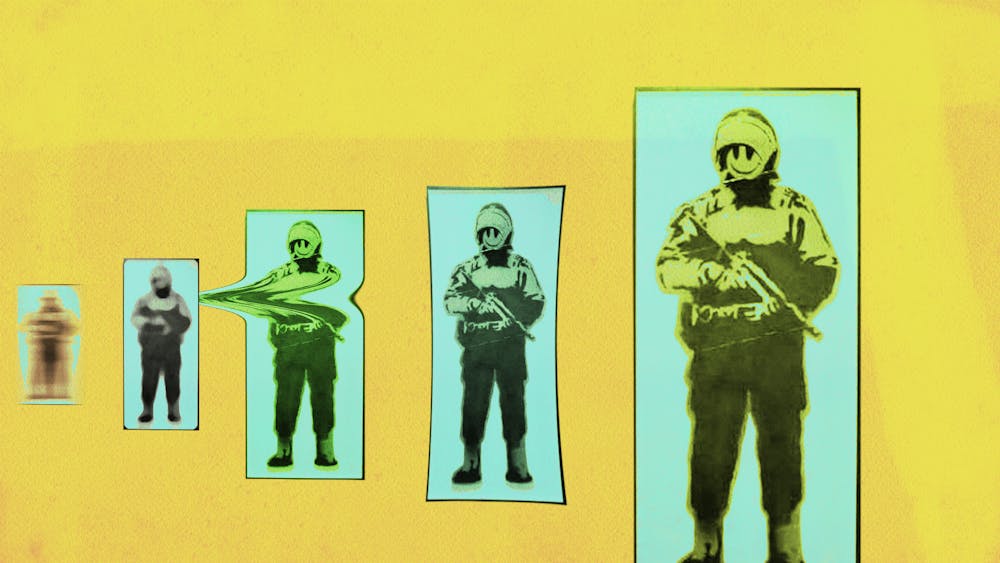The British street artist’s anti-capitalist and pro-community work should be present in the streets, not framed on walls.
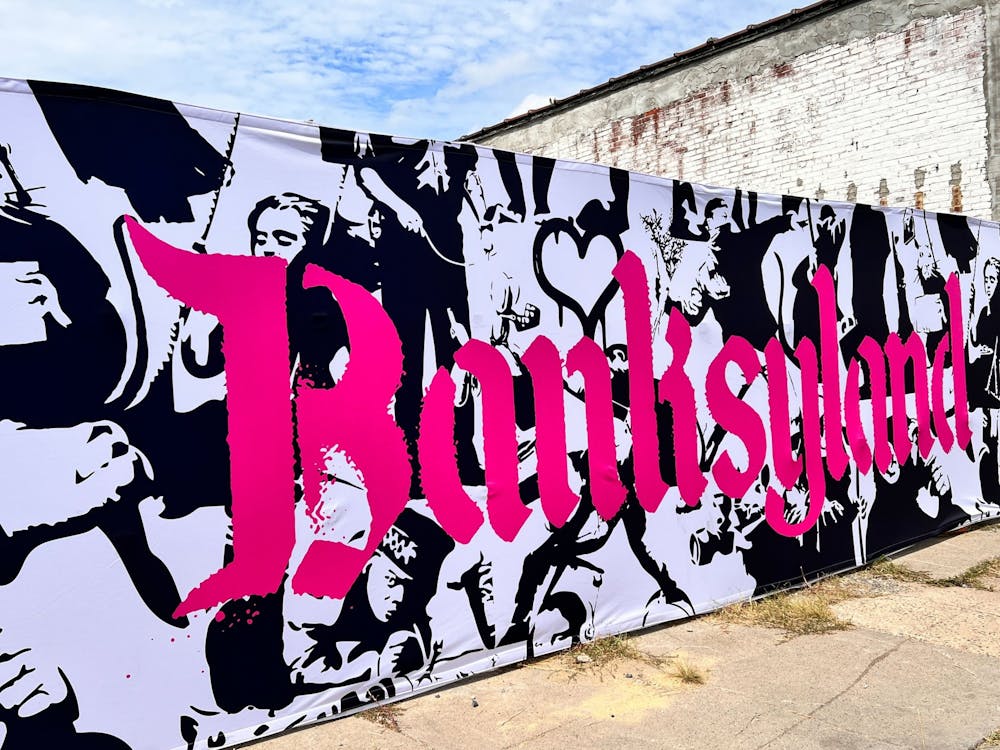
Banksy, the anonymous street artist from Bristol, made graffiti a mode of community conversation—a secret code out in the public. To him, whoever he may be, art should be inescapable, immersive, and most importantly, holding people accountable.
Banksyland, an unauthorized national tour of his work, is shredding the artist’s vision like “Girl with Balloon” all over again. All works are displayed in the dark, punk way typical of Banks—but in a context that would offend him.
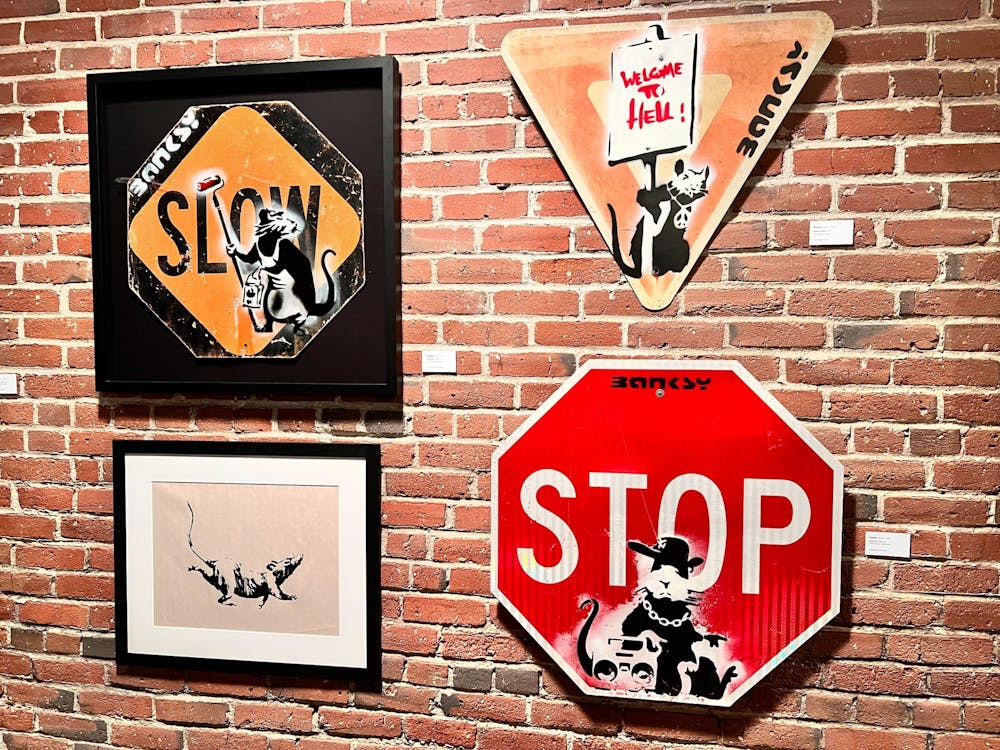
When you think of Banksy, you see a hooded man on the wet streets of England, making art in tunnels throughout the night for the world to wake up to; Banksy makes art an event. His most ambitious projects include a fully–functioning amusement park called “Dismaland,” a dystopian take on Disneyland. The park was made of Grim Reapers riding bumper cars, police vans in marshy waters, and a decrepit skeleton of Cinderella’s castle. But for Banksy, it didn’t start with Mickey mouse—but with a rat.
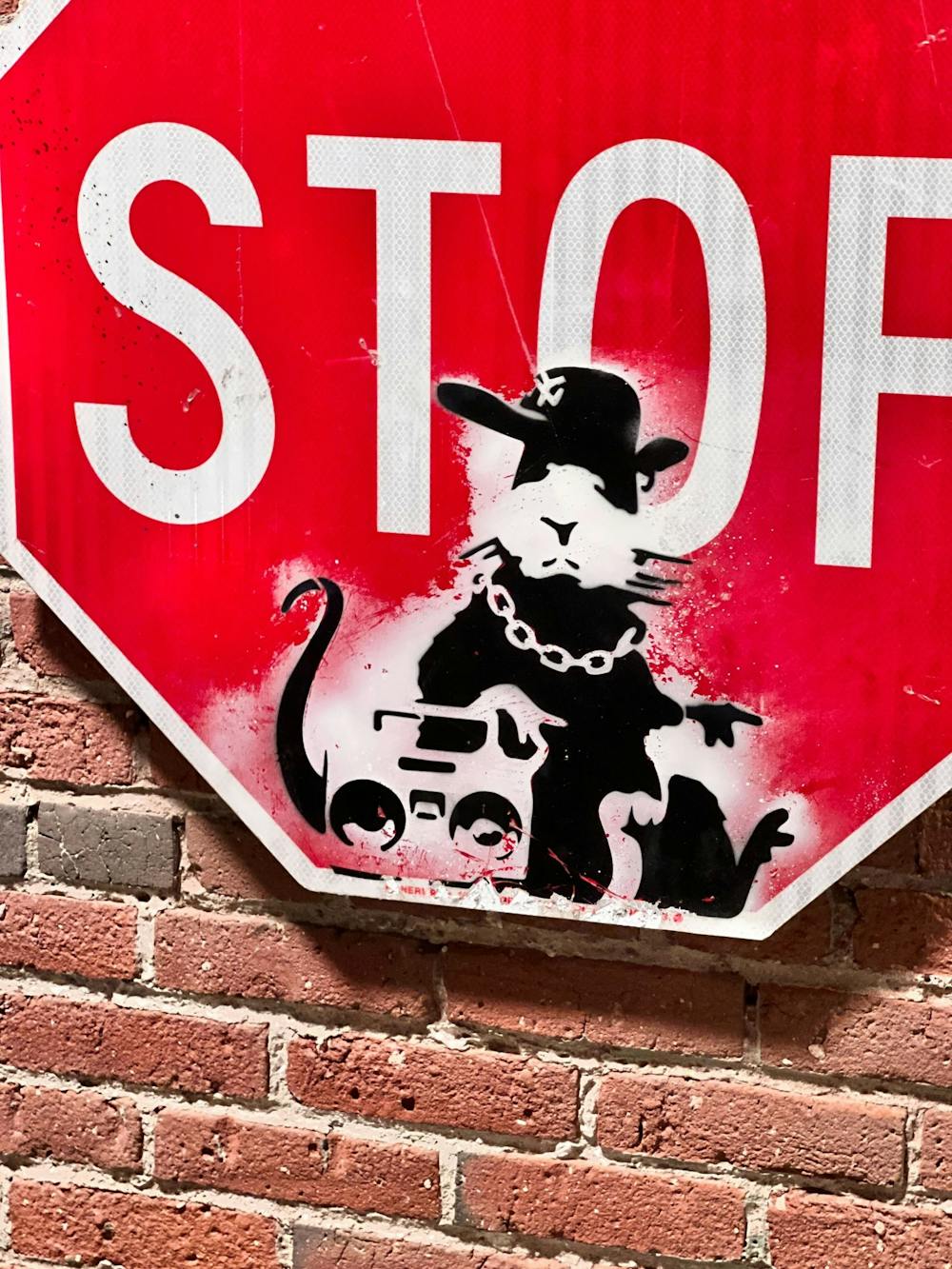
Banksy got his start in the mid–1990s, with spray–paint stencils of rats—either wearing Yankee hats, holding boomboxes, or carrying sarcastic picket signs. These rats, left on STOP or YIELD signs, are all in shadowy colors, unlike the colorful neon tones most of us associate with graffiti art. But a rat is clever in its ability to not be caught—and like a pest, you cannot exterminate Banksy.
From here, Banksy’s art became more urgent and present—and especially more contentious. In his first U.S. exhibition in LA, celebrities from Angelina Jolie to Leonardo DiCaprio wandered an opulent living room with a chandelier and oil paintings on the wall. Suddenly, a live Indian elephant entered, painted in golden and pink damask: as Banksy put it, a “barely legal” play on “the elephant in the room.” Like much of his work, this stunt has an allegorical quality—a succinct, lesson–driven story like Midas and his golden touch. It forces memories onto us that should not be repeated with some plastic and plaster replica.
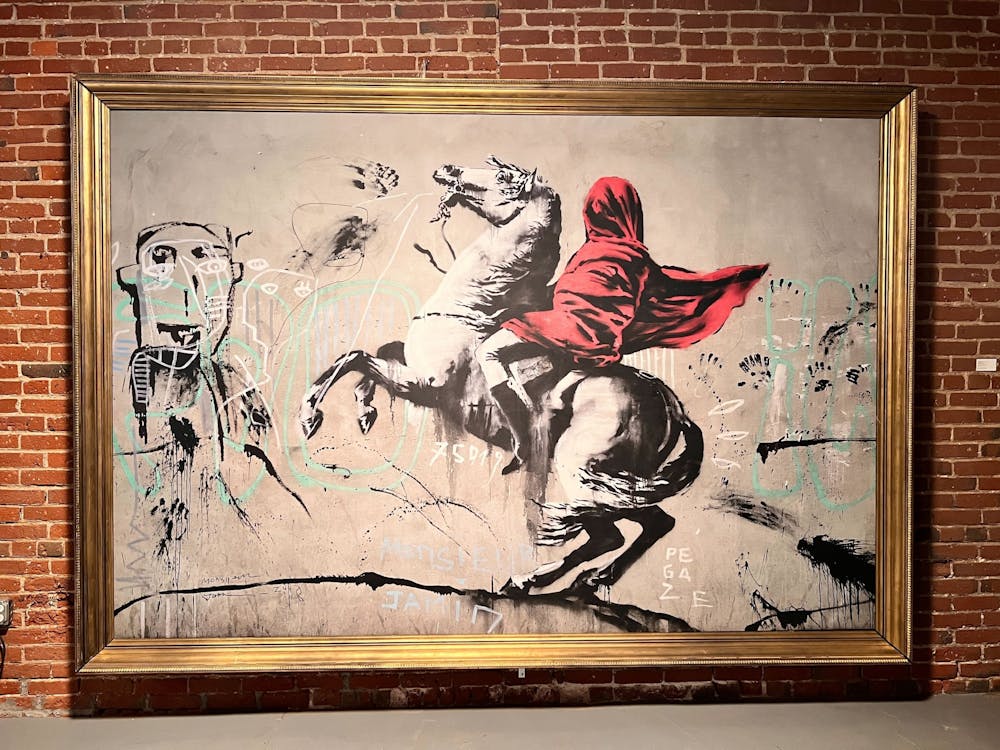
But Banksyland offers a different view of the artist. One of the pieces on display is a copy of Napoleon's Crossing the Alps. The piece first appeared in response to France’s ban on Burqas. In Banksy's version, Napoleon's steed lunges ahead with petrified eyes—not because of the unfazed rider, but because Napoleon himself seems to be dead, wearing a Burqa arranged to resemble a body bag.
Seeing this work screen–printed onto canvas and framed in a Germantown warehouse, some spectators pointed out other markings surrounding it. “Do they belong to Banksy?” No, the surrounding green and white drawings are from fellow artists. And that's Banksy’s mission: making art a call and response. But this feature vanishes when we try to frame his art.
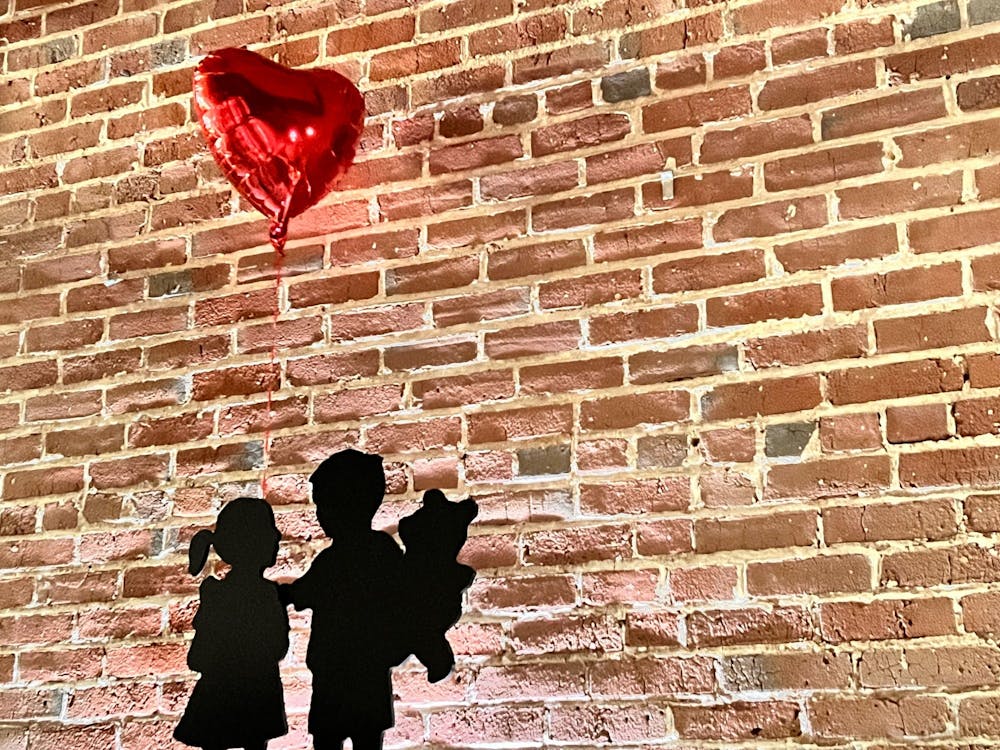
Banksyland is marketing itself on how it was unauthorized and is in “hidden locations,” as if it holds the same revolution as Banksy—but it is not a rebellion, it is simply hypocrisy. The show claims that its proceeds are going towards art education in public schools, but the details are murky. It seems as though Banksyland has tried to bottle and sell revolutionary calls to action—a doomed enterprise.
